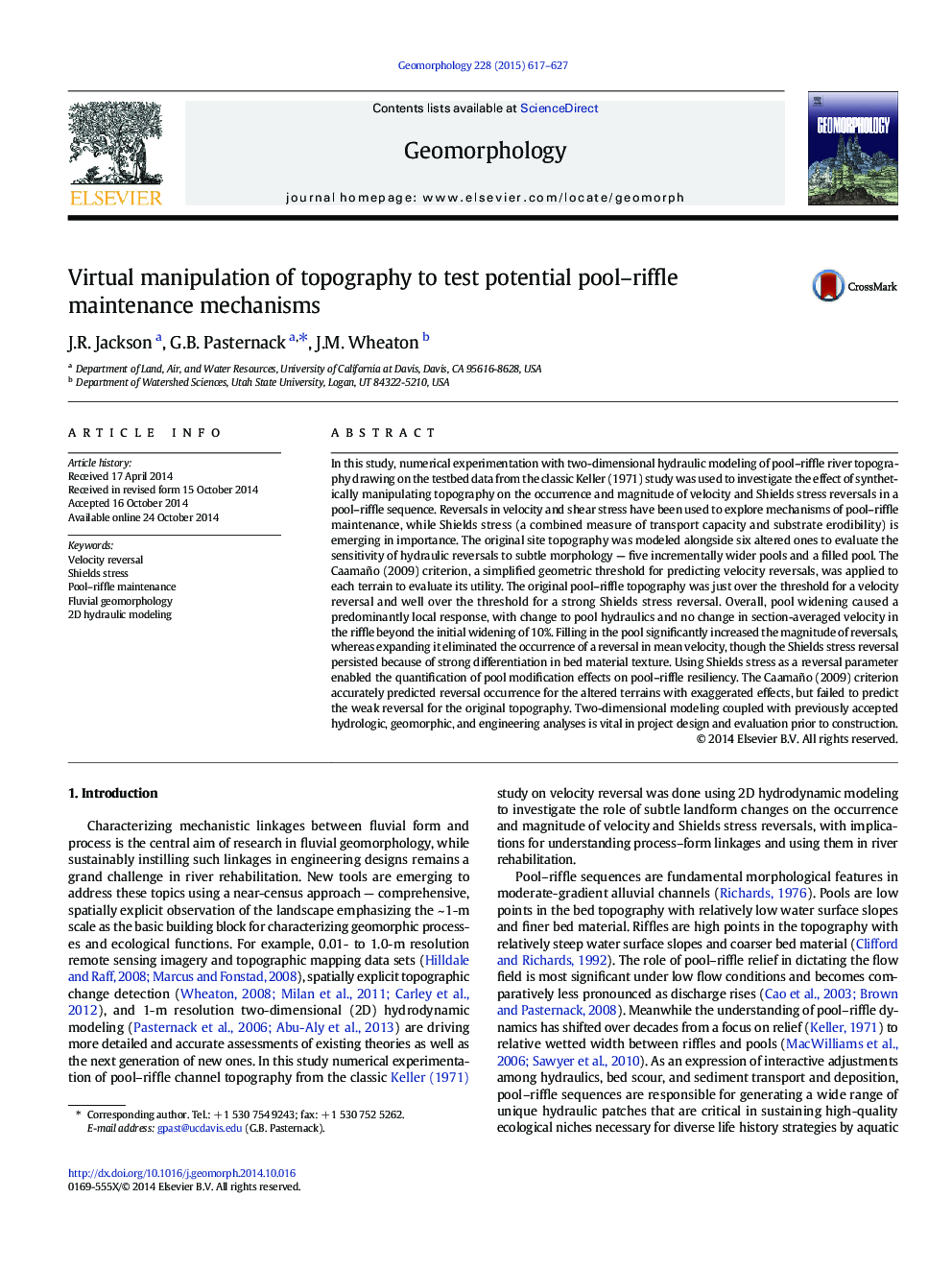| کد مقاله | کد نشریه | سال انتشار | مقاله انگلیسی | نسخه تمام متن |
|---|---|---|---|---|
| 6432319 | 1635421 | 2015 | 11 صفحه PDF | دانلود رایگان |
- We digitally manipulated a pool-riffle couplet to create 6 new terrains.
- We modeled hydraulics from 0.09 to 3.8 times bankfull discharge for all 7 terrains.
- Results were examined for velocity and Shields stress reversals.
- Widening the pool stopped velocity reversals but Shields stress reversals remained.
- Shields stress can be used as an effective mechanism to model scour potential.
In this study, numerical experimentation with two-dimensional hydraulic modeling of pool-riffle river topography drawing on the testbed data from the classic Keller (1971) study was used to investigate the effect of synthetically manipulating topography on the occurrence and magnitude of velocity and Shields stress reversals in a pool-riffle sequence. Reversals in velocity and shear stress have been used to explore mechanisms of pool-riffle maintenance, while Shields stress (a combined measure of transport capacity and substrate erodibility) is emerging in importance. The original site topography was modeled alongside six altered ones to evaluate the sensitivity of hydraulic reversals to subtle morphology - five incrementally wider pools and a filled pool. The Caamaño (2009) criterion, a simplified geometric threshold for predicting velocity reversals, was applied to each terrain to evaluate its utility. The original pool-riffle topography was just over the threshold for a velocity reversal and well over the threshold for a strong Shields stress reversal. Overall, pool widening caused a predominantly local response, with change to pool hydraulics and no change in section-averaged velocity in the riffle beyond the initial widening of 10%. Filling in the pool significantly increased the magnitude of reversals, whereas expanding it eliminated the occurrence of a reversal in mean velocity, though the Shields stress reversal persisted because of strong differentiation in bed material texture. Using Shields stress as a reversal parameter enabled the quantification of pool modification effects on pool-riffle resiliency. The Caamaño (2009) criterion accurately predicted reversal occurrence for the altered terrains with exaggerated effects, but failed to predict the weak reversal for the original topography. Two-dimensional modeling coupled with previously accepted hydrologic, geomorphic, and engineering analyses is vital in project design and evaluation prior to construction.
Journal: Geomorphology - Volume 228, 1 January 2015, Pages 617-627
